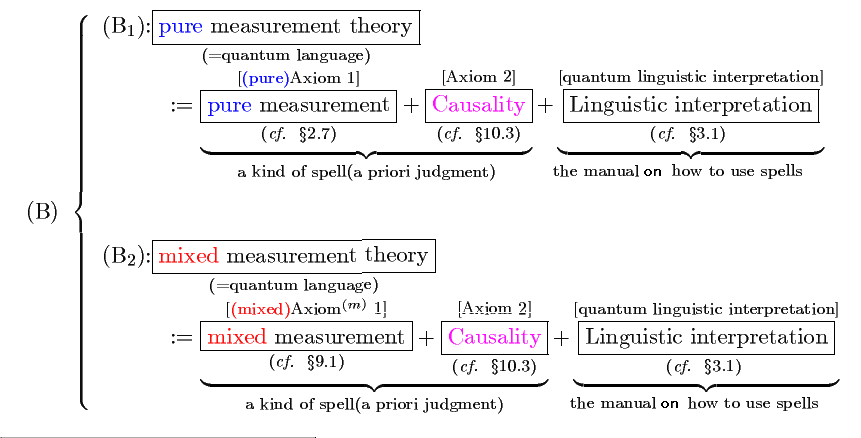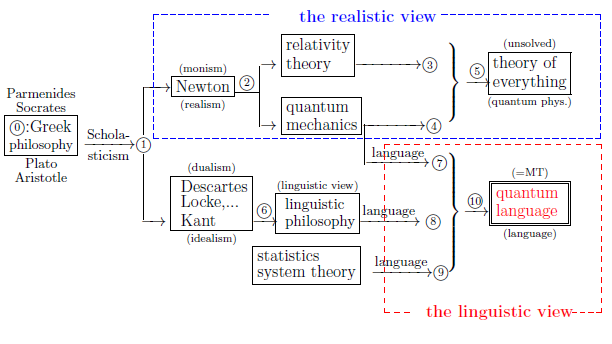Abstract (Chap. 10; Axiom 2 ( Causality ))
Measurement theory has the following classification:
This is formulated as follows.
$(A):$
$
\underset{(=\mbox{ quantum language})}{\mbox{
measurement theory}}
\left\{\begin{array}{ll}
\underset{\mbox{(A$_1$)}}{
\mbox{pure type}}
\left\{\begin{array}{ll}
\!\!
\mbox{classical system}
:
\mbox{ Fisher statistics}
\\
\!\!
\mbox{ quantum system}
:
\mbox{
usual quantum mechanics
}
\\
\end{array}\right.
\\
\\
\underset{\mbox{(A$_2$)}}
{\mbox{mixed type}}
\left\{\begin{array}{ll}
\!\!
\mbox{ classical system}
:
\mbox{ including Bayesian statistics,} \\
\qquad \qquad \qquad \mbox{ Kalman filter}
\\
\!\!
\mbox{ quantum system}
:
\mbox{ quantum decoherence
}
\\
\end{array}\right.
\end{array}\right.
$

 That is, we anser the question:
That is, we anser the question:
Again recall that, as mentioned in $\S$1.1, the main purpose of this book is to assert the following figure 1.1:

